Gap, Banana Republic offer casual fashions
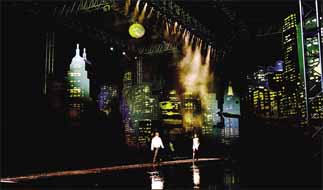
The New York-inspired fashion show at COEX this month.
Starting around 2000, the global fashion industry began flirting with premium jeans, which prompted a major price hike for a genre of clothing that once epitomized blue-collar fashion.
In 2007, Korean consumers can buy a pair of premium chinos or a premium cotton tank top.
With the opening of Gap and Banana Republic stores this month, Shinsegae International, a Korean fashion retail behemoth, hopes Koreans get used to premium casual fashion.
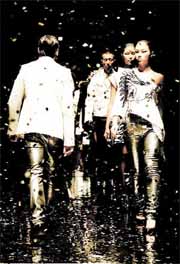
Diesel boosted its image and brand power through a large-scale fashion show since its 2003 launch in Korea. The 2007-2008 fall and winter collection.
For starters, there will be five Gap stores, including the flagship store in Myeongdong, and three Banana Republic stores inside Seoul department stores.
Shinsegae plans to open an additional 15 Gap and seven Banana Republic stores in the next five years. In terms of revenue, the goal is to reach 150 billion won, or about $150 million, in sales.
The opening of Gap in Korea almost immediately follows an opening in Dubai, but comes about 12 years later than Japan. What took so long?
“Gap stores in the United States, France, Germany, the United Kingdom, Canada and Japan are directly operated by Gap Inc., which owns Gap, Banana Republic, Old Navy and Piperlime,” said Ron Young, managing director of Gap Inc., who flew to Korea for the opening of the stores in Seoul. “Everywhere else is a franchise, and it takes time to locate the right partner.”
It was a year ago that Shinsegae came into the picture, and a little over six months ago the store signed a contract, according to Lindsay Knaak, Gap Inc.’s marketing manager in New York City.
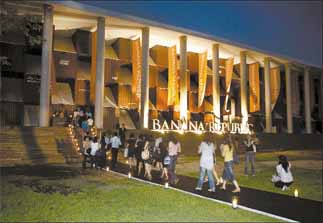
The launch show at the Papertainer Museum in southern Seoul.
Korean casual fashion was loosely styled after the American collegiate look for men and women, with people often dressing in an ensemble of button-down or polo shirts over a pair of khakis.
Children of immigrants and Korean nationals returning from study in the United States and Canada also sported the look, inspiring Koreans. That all-American casual style was a sign of elitism and success among Koreans.
Local apparel companies, such as Hunt and Basic House, have so far satisfied the market, and from the mid-1980s to the late 1990s the average person in Korea could be seen in a low-priced preppy outfit on campus and on weekends. That easygoing clean-cut style is spreading to toddlers and the older generation,
More casual brands abroad strengthened the market in Korea, with American Apparel and Uniqlo opening in 2005.
In 2003 Italian fashion brand Diesel introduced premium jeans with hand-crafted pocket details and special washes with prices to fit the image.
The brand, also imported by Shinsegae International, ripped open the sector.
More pricey premium denim brands ― like Seven, G-Star and True Religion ―?quickly found their way to Korean hipsters.
With large-scale, extravagant fashion events like the one held earlier this month at the COEX Convention Center in southern Seoul, Diesel has remained near the forefront of premium casual fashion, after Armani Exchange, Miss Sixty and other brands.
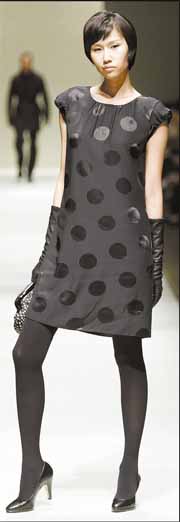
Banana Republic’s fall and winter looks for women.
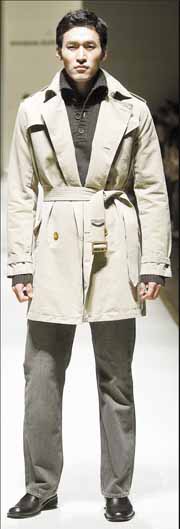
Banana Republic’s fall and winter looks for men.
In Korean neighborhoods dominated by relatively inexpensive casual brands from around the world, a regular cotton sweater costs $30 to $40, whereas Gap will offer a similar item for over $70.
Will Gap compete? It appears so.
“In the first weeks, we’ve already seen our stores make 400 percent of our expected sales, with 10 million won in sales on one weekday and 25 million won on one weekend day,” said Cho In-young, chief of communications for Shinsegae International.
Cho noted that after years of wearing imported garments, Korean consumers find both American and European sizes and fits to work for them.
“The difference is that we only carry small sizes, up to a U.S. four for ladies, for example,” she said.
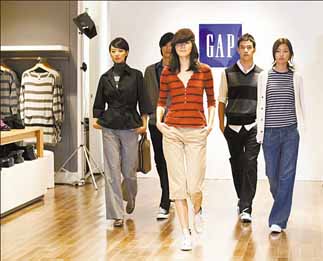
Korean models show off Gap’s all-American look for Koreans at its first freestanding store in Myeongdong, central Seoul. Photos courtesy APR
By Ines cho Contributing Writer [inescho@joongang.co.kr]










with the Korea JoongAng Daily
To write comments, please log in to one of the accounts.
Standards Board Policy (0/250자)